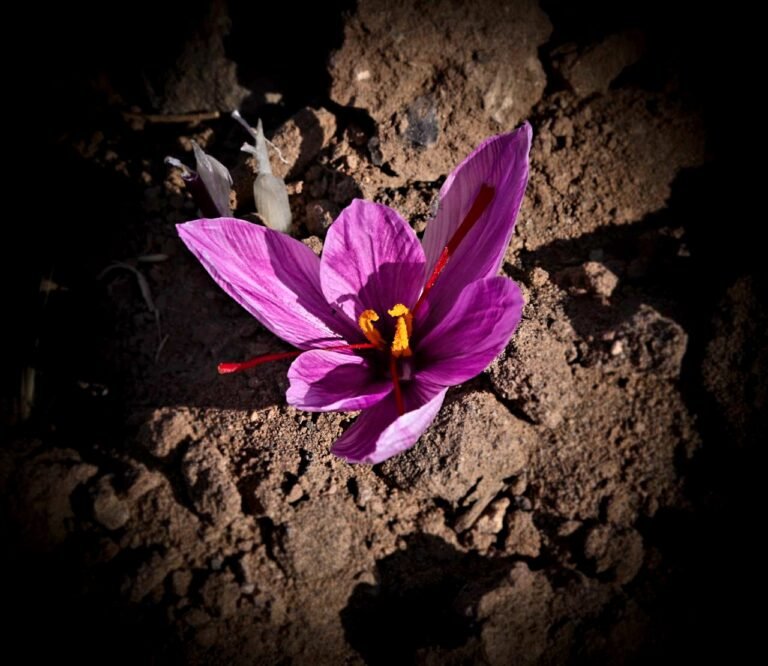‘”It takes about 75,000 saffron crocus flowers to produce just 400 grams of saffron,” That’s not folklore, it’s agriculture.
Saffron the spice isn’t just expensive. It’s precision grown, labour harvested and highly sought after across industries. from gourmet kitchens in Paris to advanced clinical trials studying its bioactive compounds. This crimson thread has history measured in millennia and value that reaches beyond its weight in gold. And yet, most people have no idea how to use saffron correctly.
I’ve seen professional chefs, nutritionists, herbalists, even procurement managers either underutilize it or misunderstand it entirely. That’s a missed opportunity. Because saffron, when used well, delivers more than aroma and flavour.
This article isn’t about singing praises. It’s about equipping you with clear, strategic insight into how to source, use and benefit from saffron the spice. Whether you are in food service, health, retail, or production development. I’ll break it down without fluff. starting from it’s core value and moving towards application. From practical cooking tips to its surprising health benefits, let’s dive into why saffron deserves a starring role in your pantry. But first, let’s address the elephant in the room:
Saffron is expensive. Yes, but a little saffron goes a long way, and value is not tied to cost.
Let’s start with what you actually need to know. Saffron comes from the stigmas of Crocus sativa, a flower that blooms for just a few weeks a year. Each flower produces only 3 stigmas, and they must be hand harvested at dawn to avoid sunlight degradation. That’s the bottleneck, That’s why saffron is amongst the most expensive food products.
But here’s where it gets interesting, you only need a tiny amount to create an impact. We’re talking 0.1 grams per dish in fine dining or 15-30 milligrams per day in standardised therapeutic doses. The potency is real, if you know how to use saffron.
Beyond the kitchen, saffron offers health benefits rooted in science. Studies show its active compound, crocin, may boost mood and reduce anxiety, think of it as nature’s gentle uplift. Add a few threads to to tea or milk for a soothing evening ritual. Saffron also aids digestion. When Alexander the Great conquered Persia, he too came to believe in “crocus sativus‘” healing powers. He told his soldiers to drink it in their tea and even infused his bath with it to heal his battle wounds.
Sourcing good quality saffron is critical. Iranian and Kashmiri variants lead in flavour and aroma intensity. Greece, Spain and Afghanistan also offer quality saffron. Avoid powders, they are often adulterated. Packaging also plays a critical role, saffron is sensitive to strong light and moisture so try to look for air tight containers, preferably glass. Plastic containers are not great but try to avoid plastic bags if you can. Glass is a non-reactive material, it doesn’t interact with the spice or absorb their flavour or odors. Plastic, on the other hand, can be porous and absorb odors or even leach chemicals into the spice.
Saffron’s culinary role is built on three pillars: Colour, Aroma, and Taste.
All three are volatile. So don’t boil saffron. Instead crush your saffron threads in a pestle and mortar then steep in lukewarm water for 5 to 10 minuets. Or my favoured way is to scatter the crushed saffron on two or three ice cubes and set aside to melt. The result? A golden infusion with all the flavour, none of the waste.
Pro tip for kitchen: Prepare your saffron in advance and add it to dishes at end of cooking to preserve potency.
Saffron is used in many dishes to name a few cases that shine:
And yes. saffron pairs beautifully with proteins, chicken, lamb and seafood. next time you make a seafood risotto or pasta, add saffron and it will elevate to a higher level.
Once you learn how to use saffron, a little goes a long way.
Here’s where saffron shifts from kitchen to lab bench. Recent human studies have shown saffron extracts to be effective in supporting:
Let’s look at affron®, a patented Spanish extract. Clinical trials show it provides mood support at just 28 mg/day.
Another product, Safr’Inside®, standardised to safranal and crocin, is being used in cognitive health blends and even sport recovery supplements.

The global saffron market is projected to reach $1.6 billion by 2030, driven by demand in nutraceutical, functional food, and personal care.
Key drivers:
Saffron isn’t just a spice. It’s a strategic tool. When used correctly, it delivers disproportionate value for chefs, formulators, retailers and consumers alike.
Respect the dose. Understand the science. Demand quality. And if you are going to invest in saffron, invest in using it well. Because that tiny thread? It’s more powerful than it looks